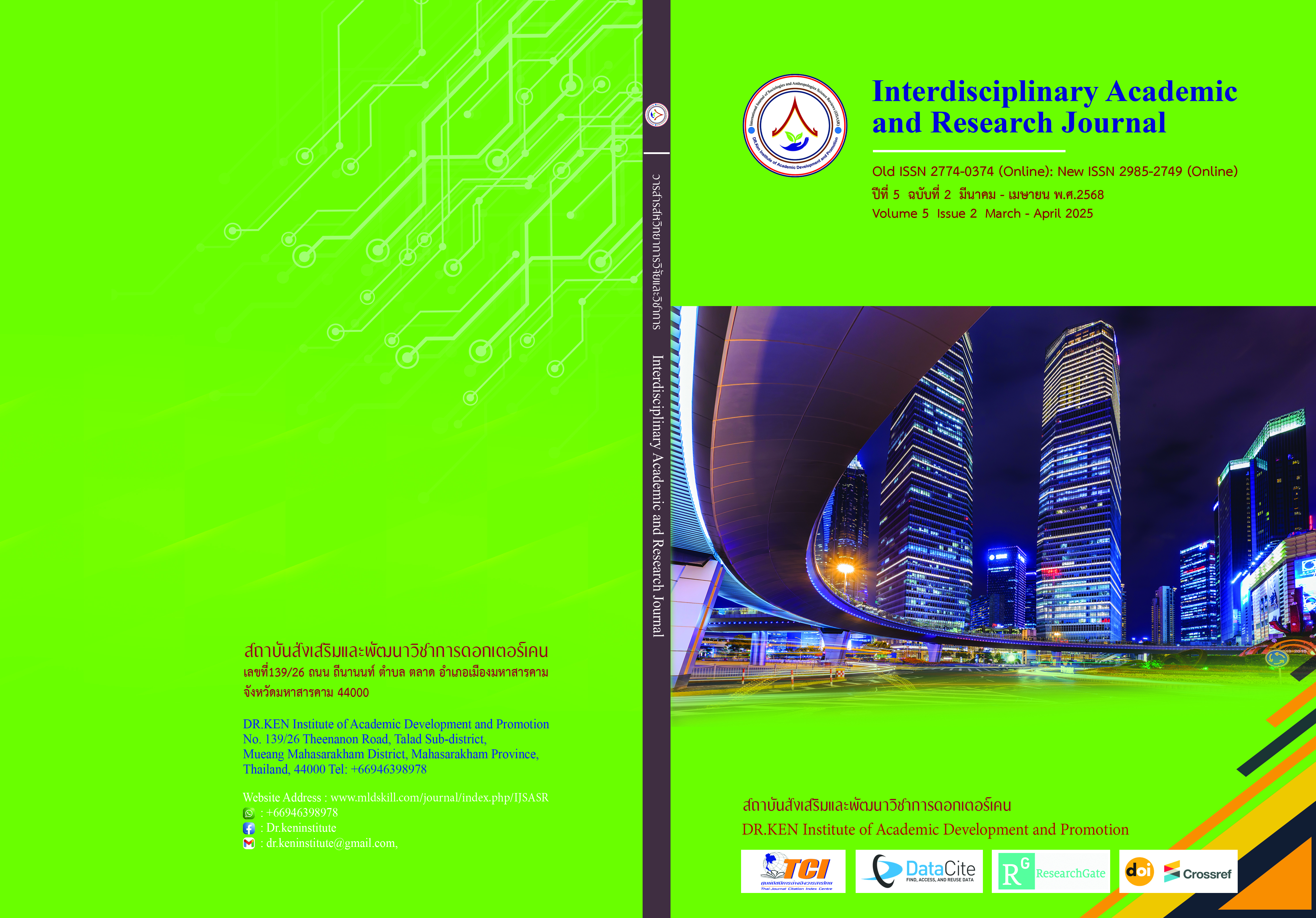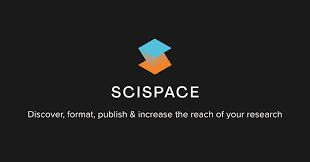Developing Mathematical Communication Abilities through Experiential Learning for Grade 10 Students at Wiengmok Wittaya School in Lampang Province
DOI:
https://doi.org/10.60027/iarj.2025.281728Keywords:
Experiential Learning, Mathematical Communication, Secondary EducationAbstract
Background and Aims: Mathematical skills and processes refer to the ability to apply knowledge to learn various things, gain understanding, and effectively apply them in daily life. Learning management that emphasizes students' self-experienced learning and analytical thinking processes enhances students' ability to learn more effectively. Therefore, the purposes of this research were to (1) develop the mathematical communication abilities of grade 10 students through experiential learning activities and (2)study best practices in organizing experiential learning activities that enhance mathematical communication abilities.
Methodology: The target group consisted of 10 students from grade 10, the second semester of the academic year 2023, at Wiang Mok Wittaya School, Lampang province. The research instruments included: 1) an experiential learning activity plan, 2) a teacher's classroom behavior observation form, 3) a student learning behavior observation form, 4) two mathematical communication abilities assessment forms focusing on speaking one for peer assessment and one for teacher assessment, 5) a written mathematical communication abilities test administered at the end of each cycle, and 6) a final written mathematical communication abilities test after the completion of the activities. Data were analyzed using mean, standard deviation, and content analysis.
Results: In each cycle and after the activities, 1) the student's average mathematical communication abilities exceeded 80%. The average score for verbal communication abilities was over 95% in every cycle and after the activities. The students were able to explain their concepts clearly to peers, discuss and exchange ideas within groups and class levels until concluding, and present their ideas and problem-solving methods in a clear and structured manner. The student's average score for written communication abilities in the first cycle was 67.11%, which increased to over 70% in the second to fourth cycles and after the activities. The students demonstrated the ability to create tree diagrams to illustrate problem-solving concepts and write step-by-step explanations using mathematical language and symbols. 2) The best practices for conducting experiential learning activities that enhance mathematical communication abilities include: (2.1) using a variety of activities, designing situations relevant to the students' daily lives, and incorporating materials to stimulate interest and encourage participation; (2.2) encouraging students to review their learning through hands-on activities; and (2.3) encouraging continuous verbal and written communication through group discussions, using guiding questions, and providing positive reinforcement when students express their ideas.
Conclusion: The mathematical communication abilities of grade 10 students at Wiang Mok Wittaya School improved by more than 80% after participating in experiential learning activities. The best practices for conducting experiential learning activities that enhance mathematical communication abilities involve students learning through hands-on experiences using activities that are closely related to real life, with concrete materials. Additionally, these practices encourage students to continuously develop their mathematical communication abilities, both in speaking and writing.
References
กรวิกา ปานศักดิ์. (2562). การพัฒนาความสามารถในการสื่อสารทางคณิตศาสตร์ และการนำเสนอด้วยการจัด การเรียนรู้แบบเสริมต่อการเรียนรู้ เรื่อง จำนวนจริง สำหรับนักเรียนชั้นมัธยมศึกษาปีที่ 4. วารสารศึกษาศาสตร์ มหาวิทยาลัยมหาสารคาม. 13 (2), 32-44.
พรภัทร สินดี. (2557). ผลการจัดการเรียนรู้แบบบูรณาการเชิงวิธีการที่เน้นกระบวนการกลุ่มที่มีต่อผลสัมฤทธิ์ทางการเรียนวิชาคณิตศาสตร์ ความสามารถในการสื่อสารทางคณิตศาสตร์ และพฤติกรรมการทำงานกลุ่ม เรื่องลำดับและอนุกรม ของนักเรียนชั้นมัธยมศึกษาปีที่ 5. วิทยานิพนธ์ปริญญามหาบัณฑิต : มหาวิทยาลัยศรีนครินทร์วิโรฒ.
พรรณนิภา ทองนวล. (2554). ผลการจัดการเรียนรู้อย่างมีชีวิตชีวาโดยเน้นการใช้ตัวแทนที่มีต่อผลสัมฤทธิ์ทาง การเรียน ความสามารถในการให้เหตุผลและความสามารถในการสื่อสารทางคณิตศาสตร์ เรื่อง ความสัมพันธ์และฟังก์ชัน ของนักเรียนชั้นมัธยมศึกษาปีที่ 4. วิทยานิพนธ์ปริญญามหาบัณฑิต : มหาวิทยาลัยศรีนครินทร์วิโรฒ.
พิชิต แก้วก๋อง. (2549). การพัฒนากิจกรรมการเรียนการสอนเพื่อส่งเสริมทักษะการแก้ปัญหาและการสื่อสารทางคณิตศาสตร์สำหรับนักเรียนมัธยมศึกษาปีที่ 2 โรงเรียนสันหนองควาย จังหวัดเชียงราย. วิทยานิพนธ์ปริญญามหาบัณฑิต : มหาวิทยาลัยเชียงใหม่.
พินันทา ฉัตรวัฒนา. (2564). นวัตกรรมการศึกษาเชิงสร้างสรรค์ด้วยการเรียนรู้ผ่านประสบการณ์ เพื่อส่งเสริมการศึกษาในผู้เรียนยุคดิจิทัล. วารสารครุศาสตร์อุสาหกรรม. 20 (1), C1-C9.
ไพศาล แมลงทับทอง. (2558). ผลการจัดกิจกรรมการเรียนรู้แบบอุปนัยและนิรนัยที่มีต่อความสามารถในการให้เหตุผล และความสามารถในการสื่อสารด้านการเขียนทางคณิตศาสตร์ เรื่องทฤษฎีจำนวนเบื้องต้น ของนักเรียนชั้นมัธยมศึกษาปีที่ 4. วารสารศึกษาศาสตร์. 26 (2), 102-113.
เรียมพร แสนซุ้ง. (2558). การจัดกิจกรรมการเรียนรู้ตามแนวคิดการจัดการเรียนรู้เชิงประสบการณ์ เพื่อส่งเสริมผลสัมฤทธิ์ทางการเรียนและความสามารถในการแก้ปัญหาทางคณิตศาสตร์ เรื่อง อัตราส่วนและ ร้อยละ สำหรับนักเรียนชั้นมัธยมศึกษาปีที่ 2. วิทยานิพนธ์ปริญญามหาบัณฑิต : มหาวิทยาลัยนเรศวร.
วาสนา เพ็ชรพันธ์. (2564). ผลการจัดการเรียนรู้เชิงประสบการณ์ต่อผลสัมฤทธิ์ทางการเรียน และความสามารถการแก้ปัญหาทางคณิตศาสตร์ของนักเรียนชั้นมัธยมศึกษาปีที่ 5. วิทยานิพนธ์ปริญญามหาบัณฑิต : มหาวิทยาลัยธุรกิจบัณฑิตย์.
ศูนย์ดำเนินงาน PISA แห่งชาติ สถาบันส่งเสริมการสอนวิทยาศาสตร์และเทคโนโลยี. (2564, 25 มีนาคม). ผลการประเมิน PISA 2018 การอ่าน คณิตศาสตร์ และวิทยาศาสตร์. PISA THAILAND สถาบันส่งเสริมการสอนวิทยาศาสตร์และเทคโนโลยี. https://pisathailand.ipst.ac.th/pisa2018-fullreport/
สถาบันส่งเสริมการสอนวิทยาศาสตร์และเทคโนโลยี กระทรวงศึกษาธิการ. (2560). คู่มือการใช้หลักสูตร กลุ่มสาระการเรียนรู้คณิตศาสตร์ (ฉบับปรับปรุง พ.ศ. 2560). คลังความรู้ SciMath. https://www.scimath.org/ebook-mathematics/item/8379-2560-2551-8379
สถาบันส่งเสริมการสอนวิทยาศาสตร์และเทคโนโลยี. (2555). ทักษะและกระบวนการทางคณิตศาสตร์ (พิมพ์ครั้งที่ 3). กรุงเทพฯ : 3-คิว มีเดีย.
สำนักงานคณะกรรมการการศึกษาขั้นพื้นฐาน กระทรวงศึกษาธิการ. (2560). ตัวชี้วัดและสาระการเรียนรู้แกนกลาง กลุ่มสาระการเรียนรู้คณิตศาสตร์ (ฉบับปรับปรุง พ.ศ. 2560) ตามหลักสูตรแกนกลางการศึกษาขั้นพื้นฐาน พุทธศักราช ๒๕๕๑. กรุงเทพฯ : ชุมนุมสหกรณ์การเกษตรแห่งประเทศไทย จำกัด.
Chesimet, M.C., Githua, B.N., & Ng’eno, J. K. (2016). Effects of A Scratch-based Experiential Learning Approach on Student’s Math Learning Achievements and Interest. Journal of Education and Practice, 7(35), 51-57.
Kemmis, S., & McTaggart, R. (1990). The action research planner. 3rd edition. Deakin University Press.
Kolb, D.A. (1984). Experiential Learning: Experience as The Source of Learning and Development. Case Western Reserve University. https://www.researchgate.net/publication/235701029_Experiential_Learning_Experience_As_The_Source_Of_Learning_And_Development
Rowan, T.E., & Morrow, L. J. (1993). Implementing K-8 curriculum and evaluation standards: reading from the arithmetic Teacher. The National Council of Teachers of Mathematics.
Son, N.T., Thanh, H.T., & Thanh, V.T. (2021). Designing and Organising Experiential Learning Activities in Math Teaching at Secondary School in Northwestern Viet Nam. Asia Research Network Journal of Education. 1 (3), 136-150
Downloads
Published
How to Cite
Issue
Section
License
Copyright (c) 2025 Interdisciplinary Academic and Research Journal

This work is licensed under a Creative Commons Attribution-NonCommercial-NoDerivatives 4.0 International License.
Copyright on any article in the Interdisciplinary Academic and Research Journal is retained by the author(s) under the under the Creative Commons Attribution-NonCommercial-NoDerivatives 4.0 International License. Permission to use text, content, images, etc. of publication. Any user to read, download, copy, distribute, print, search, or link to the full texts of articles, crawl them for indexing, pass them as data to software, or use them for any other lawful purpose. But do not use it for commercial use or with the intent to benefit any business.














.png)

